Tax Deadline Approaching The 2023 tax season is underway, with the filing deadline approaching on April 15, 2024. […]
Mark Your Calendars
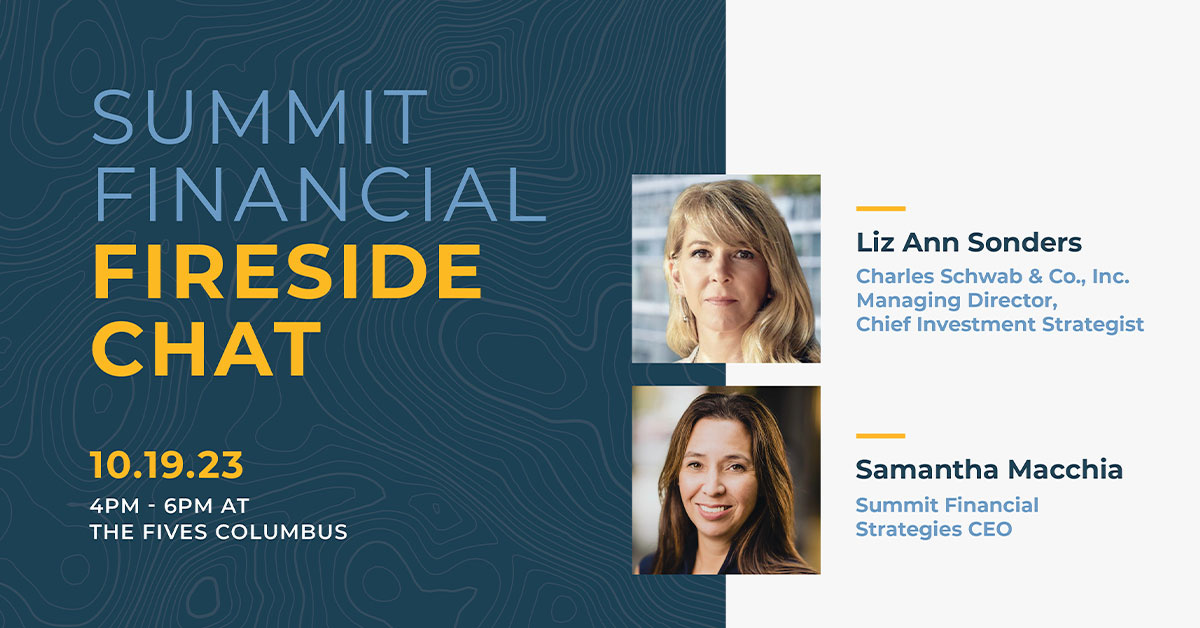
The SummitHoliday Party has been an incredibly fun night each time we’ve done it, but this year, we’re excited to do something a bit different. We’ll still have plenty of fun. We just want to mix in an evening that is informative, enlightening, and encouraging.
Please join us this year for an exclusive “Fireside Chat”, featuring Charles Schwab & Co., Inc.’s Managing Director and Chief Investment Strategist, Liz Ann Sonders, and our very own Summit CEO, Samantha Macchia.
This special evening is designed to give Summit clients a behind-the-scenes look at market updates and insights, as well as provide a casual, comfortable space to chat through any questions you may have for two industry experts.
We think it’s going to be a night you won’t want to miss!
Summit Financial Fireside Chat
Thursday, October 19th, 4-6PM
The Fives Columbus
Trivia

A Summit Family Update
A big congratulations to Summer Anderson and her husband, David! Summer gave birth to Miles Bronson Anderson on 6/15/23 at 9:28 AM. Miles was 20.6 inches and weighed 6 lb. 10 oz. We’re thrilled to welcome Miles into the Summit family.

Supporting Our City
Our team at Summit believes those who work hard should also play hard. It’s part of what keeps our team connected. The more unified we are as a team, the more unified we are in serving our clients well. One of our favorite pastimes is supporting our city together, like at this recent Columbus Crew game!

Investment Commentary
Code Breakers
Code breakers have been used throughout history to gain an advantage in warfare. In World War II, code breakers played a crucial role in the Allied victory. Code breakers cracked the Enigma code, a crucial method used by the German military to send secret messages. This intelligence helped the Allies track the movements of German troops and ships, assisting in successful Allied military operations, and ultimately a military victory.
Today we have a new breed of code breakers: The Federal Reserve Board, consumers, and market participants. These new code breakers are not involved in military conflict, but they are engaged in an economic battle against inflation and a potential recession. The Fed is working to crack the inflation code, aiming to keep the US on track for a soft economic landing and to avoid a recession. Meanwhile, consumers and market participants are trying to crack the code of future Fed actions.
In 2022 the Fed raised interest rates by 75 basis points (.75%) for four consecutive meetings, and the year ended with the Federal Funds Rate higher by 4.25%. Inflation data in the first half of 2023 has indicated a slowdown in rising price levels, enabling the Fed to take a more tactical approach with interest rate hikes and communications.
The Fed Funds futures curve plots market expectations of the Federal Funds interest rates over time. We can use the Fed Funds futures curve to help understand the market’s expected actions from the Fed. In the chart below, the gold line shows expectations at the end of Q1 (predicted peak rates in May and cuts by June), and the blue line shows expectations at the end of Q2 – a dramatic shift higher in expectations, commonly referred to as “higher for longer.”
One of the Fed’s communication tools is to release a “dot plot” showing future interest rate expectations for each individual member of the Federal Open Market Committee. Each member is assigned a “dot” which is placed on a graph showing expected year-end interest rate levels.
June’s Fed meeting brought generally welcome news of the Fed’s first interest rate pause after 10 consecutive hikes. But the Fed’s revised dot plot signaling two more rate hikes were expected in 2023 surprised the market, which believed the Fed was at, or near, the end of rate hikes.

Fed Chairman Jerome Powell emphasized the expectation of additional hikes with his testimony to Congress in late June stating “we’re very far from our inflation target” and “it will be appropriate to raise rates again this year, and perhaps twice.”
High interest rates generally are a drag on stock prices, so a market selloff could have been anticipated in the wake of Chairman Powell’s testimony and the revised dot plot. However, the US stock market maintained momentum from Q1 and continued to post gains. (Silicon Valley Bank and regional bank concerns having been addressed, and the debt ceiling showdown having been resolved as a near-term matter were no longer dampening stock prices.) After trailing in Q1, domestic stocks outpaced international markets. A reasonable conclusion is that the market was finally feeling like it had peak rates and a Fed game plan mapped out.
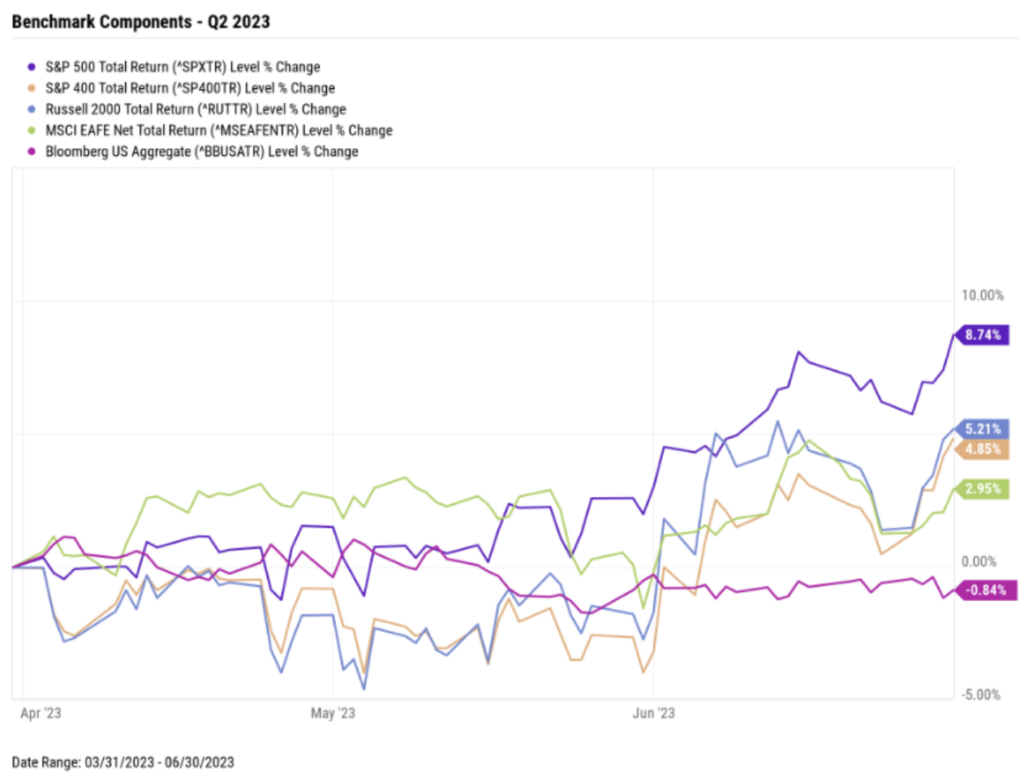
The narrative of the current economic climate would not be complete without recognizing the role of consumers. The Fed attempts to influence consumer behavior with interest rates, and consumers attempt to decode Fed moves in advance, and react by spending, saving, investing, or taking no action in response to current and expected Fed moves.
In spite of a rising stock market in the first half of 2023, and slowing inflation, surveys indicate that consumers are still feeling negative after a terrible 2022. After registering the worst consumer sentiment readings on record in 2022 (yes, even worse than the financial crisis), the US Index of Consumer Sentiment reported just a mild uptick in 2023. Recessions (shown in the gray bars on the chart) tend to happen during poor sentiment periods.
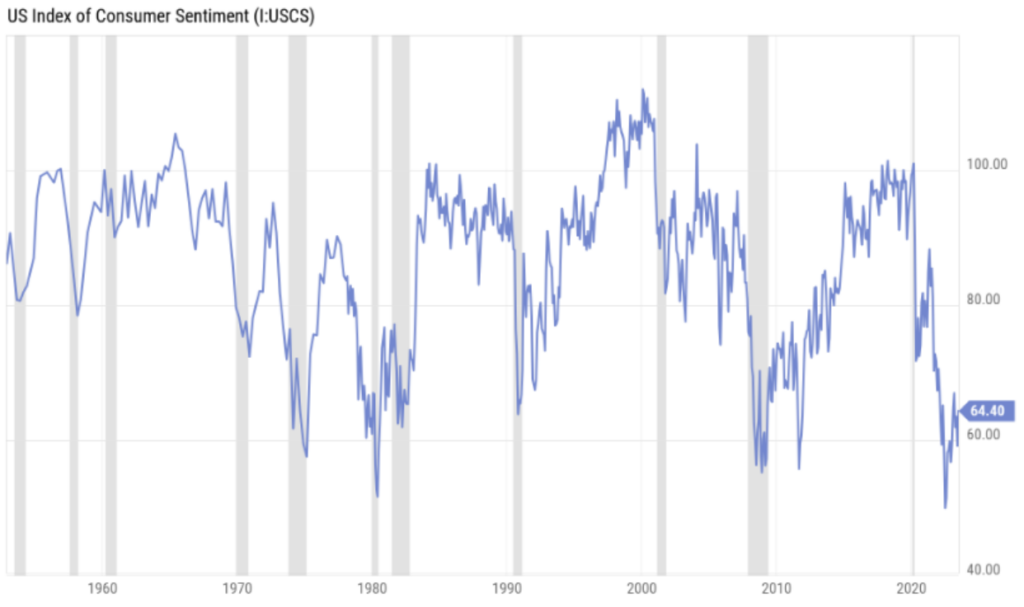
But why is the consumer feeling negative? The Misery Index (yes, it is a real index maintained by the Bureau of Labor Statistics), which adds the inflation rate and the unemployment rate, shows things are not so bad. Inflation is down and unemployment remains historically low. Despite rising interest rates, over 60% of outstanding mortgages are at a rate below 4%, according to the Federal Housing Finance Agency. Household debt service payments as a percentage of disposable income is off the lows but still remains well below the long-term average. In total, the consumer seems to be in a relatively strong position.
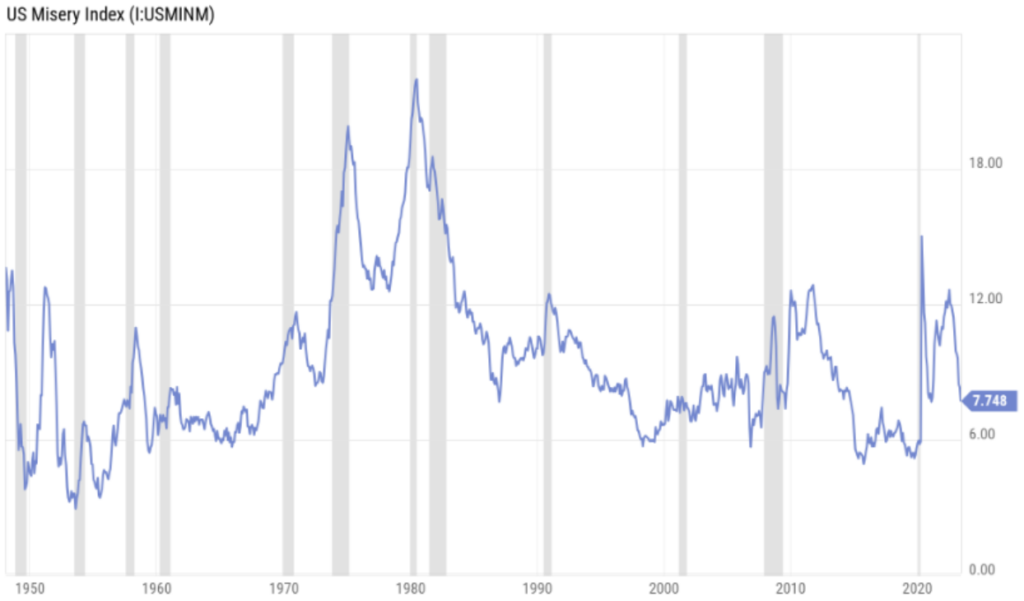

If things are not all that bad, why do people still feel down? Many consumers remain worried about a possible recession on the horizon, a perception the Fed appears to encourage in order to manipulate consumer spending, in attempts to slow inflation.
But negative consumer sentiment is not just about personal feelings or spending habits. Various economic trends on a larger scale are pointing to potential trouble. The Conference Board is a non-profit business research association that has been publishing economic indicators since 1916. Its Leading Economic Index, a measure that some economists find useful in predicting future economic activity, has been declining for 14 consecutive months as of May. Such a persistent decline is something we have previously seen only during recessions.
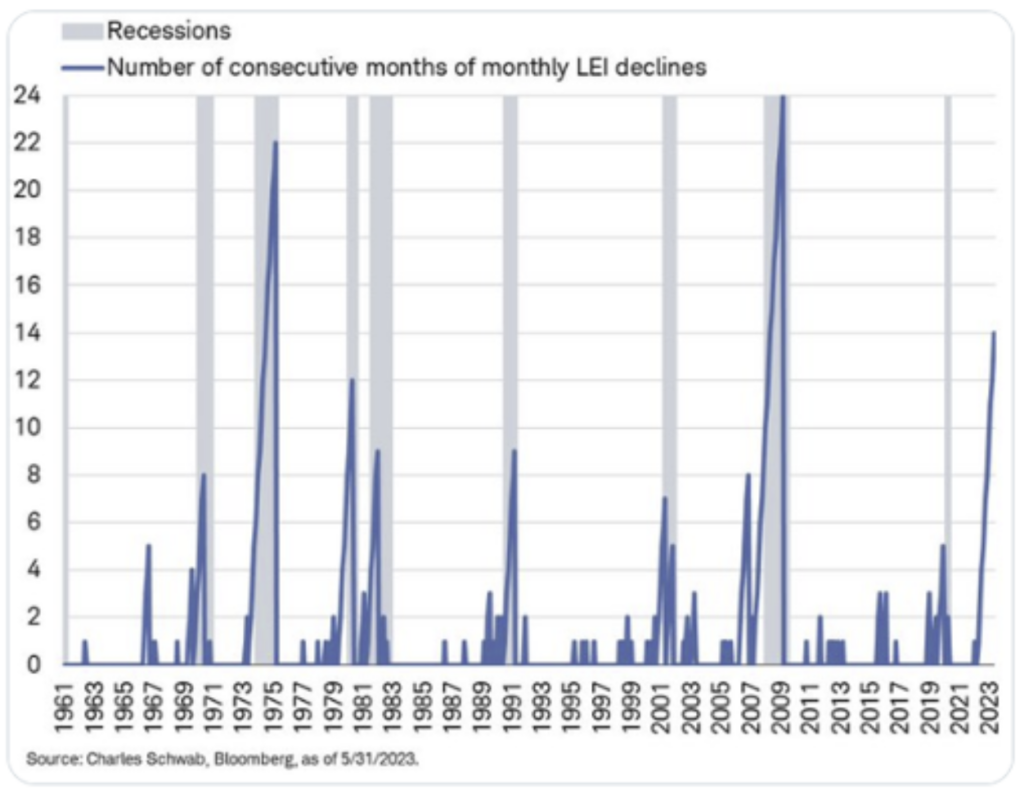
Another data point which has negative connotations for the economy is the spread between the yield on the 10-year US Treasury Bond and the 3-month US Treasury Bill. This spread is one of the inputs to a recession predicting model from the New York Fed. That spread moved negative in late October 2022. Historically, as shown in the chart below, recessions (indicated by the gray bands) have tended to occur 4 to 6 quarters after the 10-year minus 3-month Treasury spread has gone negative.
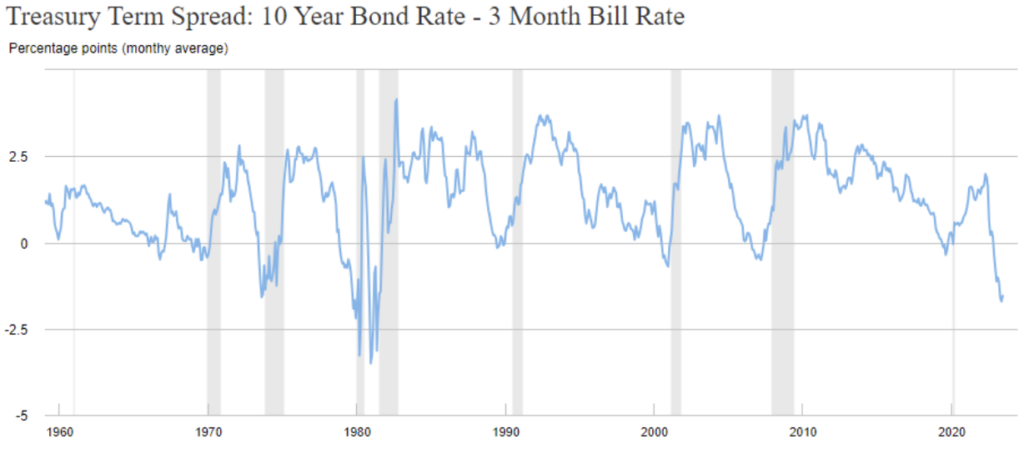
Looking forward
As we look to the second half of 2023, it remains to be seen if the Fed will successfully crack the inflation code and avoid a recession. Although consumers may feel fatigued by the current economic situation that started 18 months ago, history tells us we remain two to three quarters from when the recession is most likely to occur, if one occurs at all. As such, the Fed will remain hard at work navigating for a soft landing. It is also a healthy exercise to note the humorous observation that economists have forecast 23 of the past 6 recessions. Financial markets are dynamic, participants are always decoding and adjusting to changing circumstances so that the future will always be at least subtly different from the past. Uncertainty is always present in future outcomes, and your Investment Policy Statement remains your most appropriate guide for investment decisions. As always, your Summit team is available to answer any of your questions.
Trivia Answer: Dubai
Read More:
